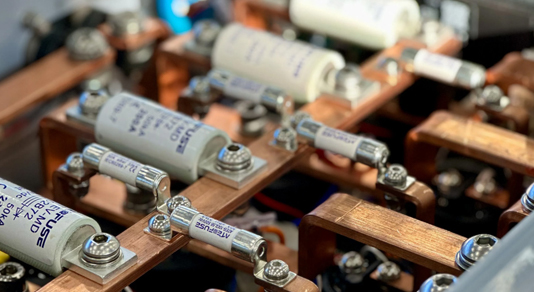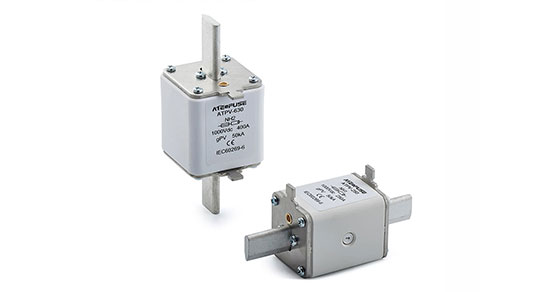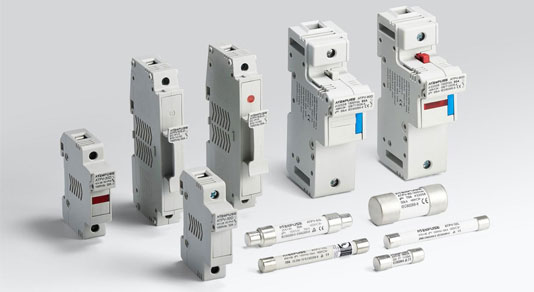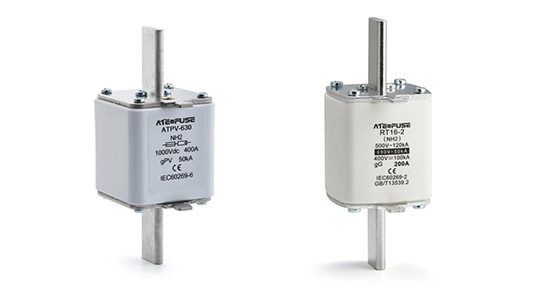Can I Use a DC Fuse on an AC Circuit?
In the of electrical engineering and everyday electrical systems, the proper selection of fuses is crucial for ensuring safety and protecting electrical devices from damage due to excessive current. A common question that often arises is whether a DC fuse can be used on an AC circuit. At first glance, fuses might seem like simple components, but their performance and suitability vary significantly depending on the type of electrical current they are designed to handle. This article will explore the differences between DC and AC circuits, the working principles of fuses, and the potential risks and considerations when it comes to using a DC fuse in an AC circuit.
Understanding DC and AC Circuits
Direct Current (DC) Circuits
Direct current flows in only one direction. In a DC circuit, the voltage remains constant over time, and the current does not change its polarity. Batteries are a common source of DC power, and many electronic devices, such as smartphones, laptops, and most low - voltage electronic circuits, operate on DC. DC circuits are often used in applications where a stable and consistent flow of current is required, such as in battery - powered vehicles and some types of industrial control systems.
Alternating Current (AC) Circuits
Alternating current, on the other hand, periodically changes direction. In an AC circuit, the voltage and current reverse their polarity at a regular frequency. In most household electrical systems around the world, the frequency of AC is either 50 Hz (in Europe, Asia, and many other regions) or 60 Hz (in the United States and some other countries). AC is preferred for long - distance power transmission because it can be easily transformed to different voltages using transformers, which reduces energy losses during transmission. It is also the standard for powering a wide range of household appliances, lighting fixtures, and industrial machinery.
How Fuses Work
A fuse is a safety device that consists of a thin wire or strip of metal with a low melting point. When the current flowing through the fuse exceeds its rated value, the heat generated by the excessive current causes the fuse element to melt, breaking the electrical circuit and interrupting the flow of current. This protects the connected electrical devices from damage due to overcurrent, which could otherwise lead to overheating, fires, or component failures.
Fuses are rated based on two main parameters: voltage and current. The voltage rating indicates the maximum voltage that the fuse can safely interrupt without arcing (the formation of a high - temperature electrical discharge between two points). The current rating specifies the maximum current that the fuse can carry continuously without melting. Different types of fuses are designed for specific applications, taking into account factors such as the type of electrical current (DC or AC), the nature of the load, and the operating environment.

The Challenges of Using a DC Fuse on an AC Circuit
Arc - Quenching Differences
One of the primary challenges when using a DC fuse in an AC circuit is related to arc - quenching. When a fuse blows in an AC circuit, the alternating nature of the current causes the current to periodically pass through zero. This natural zero - crossing point helps to extinguish the arc that forms when the fuse element melts. In contrast, in a DC circuit, there is no such natural zero - crossing, and the arc can persist for a longer time, making it more difficult to extinguish. DC fuses are specifically designed with features to deal with this persistent arc, such as longer arc - quenching chambers or special materials. When a DC fuse is used in an AC circuit, it may not be able to take advantage of the AC zero - crossing, and the arc - quenching performance may be severely compromised. This can lead to a higher risk of the arc reigniting, potentially causing damage to the fuse holder, surrounding electrical components, or even resulting in a fire.
Voltage Rating Mismatch
DC and AC fuses have distinct voltage - rating characteristics. A DC fuse's voltage rating hinges on its capacity to interrupt a direct - current circuit at a specific voltage. Conversely, AC fuses are engineered to manage the peak voltage of an alternating - current waveform. For instance, a 220 - volt RMS AC supply has a peak voltage of around 311 volts. Should a DC fuse with a lower voltage rating be employed in an AC circuit, it might fail to safely interrupt the circuit during a fault. The fuse could arc across its terminals, triggering electrical breakdown and possible harm to the circuit and connected devices.
Current - Carrying Characteristics
The current - carrying characteristics of DC and AC fuses can also differ. DC fuses are designed to handle the steady - state current flow in a DC circuit, while AC fuses are optimized for the fluctuating current in an AC circuit. The skin effect, which causes the current to tend to flow near the surface of the conductor in an AC circuit, and the presence of harmonics in some AC systems, can affect the performance of a DC fuse. A DC fuse used in an AC circuit may not respond appropriately to sudden changes in current or may have a different time - current characteristic compared to an AC - rated fuse. This means that it may not blow at the expected current level or may take longer to open the circuit, leaving electrical components exposed to potentially damaging overcurrents for an extended period.
Real - World Examples and Risks
To illustrate the potential dangers of using a DC fuse on an AC circuit, consider a household electrical setup. Suppose someone mistakenly replaces an AC - rated fuse in a circuit breaker panel with a DC fuse of the same current rating. If a short circuit occurs in the AC circuit, the DC fuse may not be able to interrupt the current quickly enough due to its poor arc - quenching ability in an AC environment. The persistent arc could cause the fuse holder to overheat, melt, and potentially start a fire. Additionally, the voltage rating mismatch could lead to electrical arcing across the fuse terminals, damaging other electrical components in the circuit, such as appliances or wiring.
In an industrial setting, using a DC fuse in an AC - powered machine can have even more severe consequences. Industrial machinery often operates at high voltages and currents, and any malfunction in the fuse protection system can result in costly equipment damage, production downtime, and safety hazards for workers.
Proper Fuse Selection
To ensure the safety and reliable operation of electrical circuits, it is essential to use the correct type of fuse for the specific application. When working with AC circuits, always use fuses that are specifically rated for AC. These fuses are designed to handle the unique characteristics of alternating current, including arc - quenching, voltage - handling, and current - carrying capabilities. Similarly, for DC circuits, use DC - rated fuses that are engineered to meet the requirements of direct - current systems.
When selecting a fuse, carefully consider the voltage and current ratings, as well as the type of load connected to the circuit. For inductive loads, such as motors or transformers, special fuses with appropriate time - current characteristics may be required to account for the inrush currents that occur when these devices are started.
In conclusion, using a DC fuse on an AC circuit is not advisable due to the significant differences in the electrical characteristics of DC and AC, as well as the specialized design requirements of fuses for each type of current. Doing so can pose serious risks to electrical safety, component integrity, and overall system reliability. By understanding the principles behind fuses and the differences between DC and AC circuits, and by choosing the right fuses for the job, we can protect our electrical systems and ensure their safe and efficient operation.






